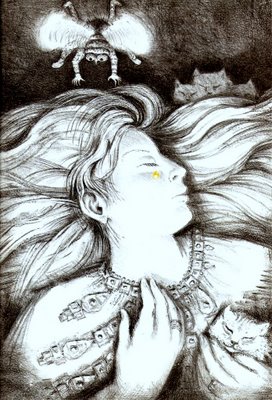I did it. I finally finished The Marble Faun. And it took a looooooong time.
It wasn't that it was particularly difficult reading, but I'd just lose interest, start and finish another book, then remember Oh yeah. I was reading this, too. I've read Hawthorne before but, honestly, not a lot. I didn't remember him droning so much in his writing and I suppose, if I'd been his contemporary, I probably wouldn't have found the reading so slow. If I'm living in the mid-19th century, it isn't like there is a lot to do for recreation beyond chasing a hoop with a stick, right?
But The Marble Faun isn't the type of book that you just read on a lark. It's deep, yet shallow; profound, but contrived; gothic, but still moralizing. The story follows four friends living in Rome. Three of them are American expats, living and working as artists (Miriam, Hilda, Kenyon); one of them is a count from the Italian countryside (Donatello). We begin the story with the three American artists belittling their "simple" Italian friend (he is not simple, they are just racist) and comparing him to the Marble Faun of Praxiteles.
Fortunately, they keep all comparisons above the waist, focusing solely on his face and expressions. Apparently, the "simplicity" of his race renders Donatello -like this marble faun- happy and incapable of comprehending melancholy, anger, sadness, or any of the darker emotions. No, Donatello the marble faun can only understand levity and joy, like his kind, the woodland sprites and wild, savage creatures of nature. Hell, he probably even has pointy ears under his mess of uncut hair! WHAT A GROSS EUROPEAN!
In spite of their jovial mockery, the foursome are inseparable. Kenyon is deeply in love with Hilda (praised for her severe purity); Hilda is BFFs with Miriam; Donatello is smitten with Miriam and follows her like a dog (Hawthorne's description, not mine); and they are all pals 4eva! Until one day when a spooky dark stranger follows Miriam around on a group tour of the catacombs.
But who is this dark stranger who follows her around like a creeper for the remainder of the book? He is clearly distressing her but, weirdly, none of her friends offer to help a girl out...except for poor, besotted Donatello, who apparently can feel ire when it comes to weirdos stalking his girl. But Miriam is guarding a dark secret, so she refuses his offers to destroy the president of her fan club.
 |
| Still. He just wants her to know that he's ready. She just has to say the word. |
One night, a horrible crime takes place, and scatters the friends in different directions. Hilda's judgmental piety prevents her from being a good friend; Donatello apparently can feel emotions, like a real boy; Miriam insists on punishing herself because she rebuffed a stalker; and poor Kenyon remains clueless. Meanwhile, Hawthorne drones for days between the action about how Rome is both gross (there are bugs and poor people) and beautiful (there is art and stuff).
So why did I want to read this book? Well, two reasons:
- The jacket description sounded more intriguing than it actually was.
- This lady:
And I did.

.jpg/800px-Edith_Bouvier_Beale_(1975_Grey_Gardens_poster_portrait).jpg)









